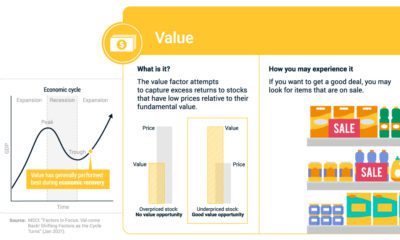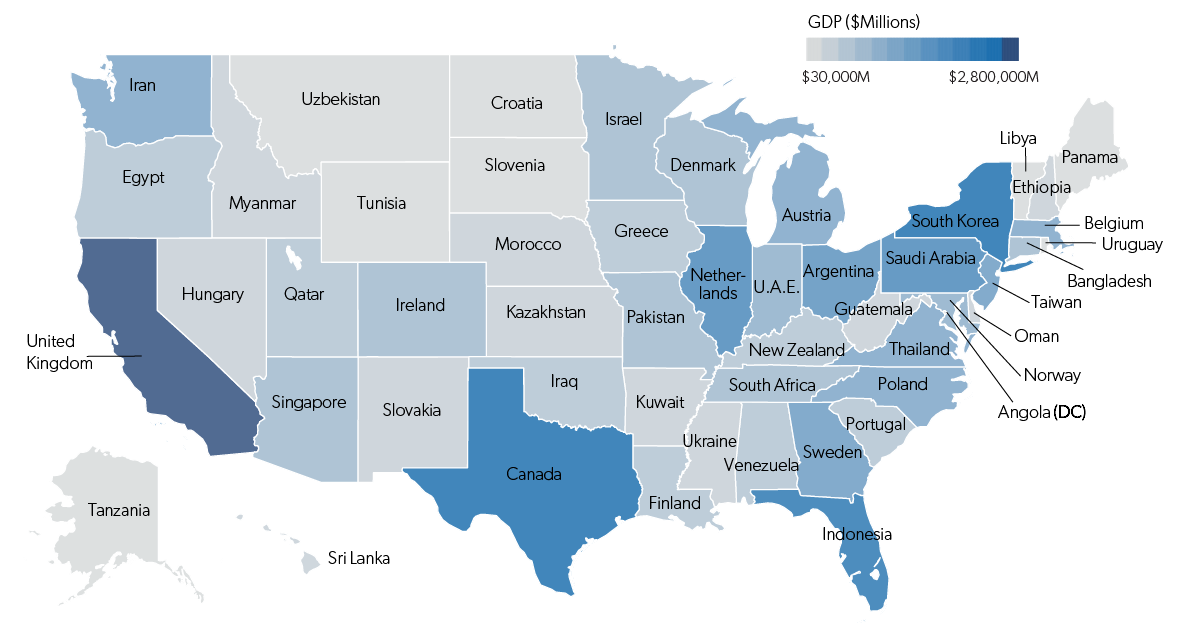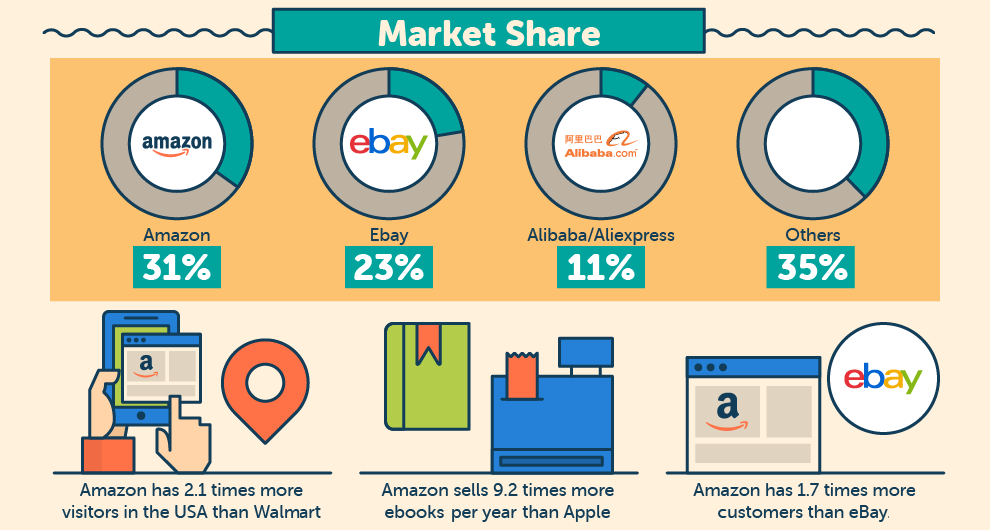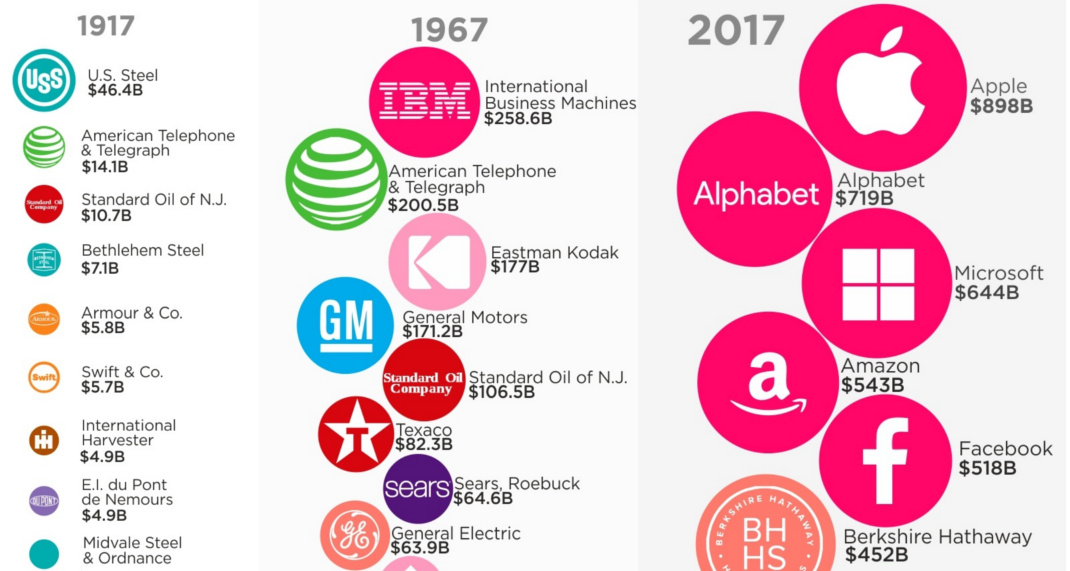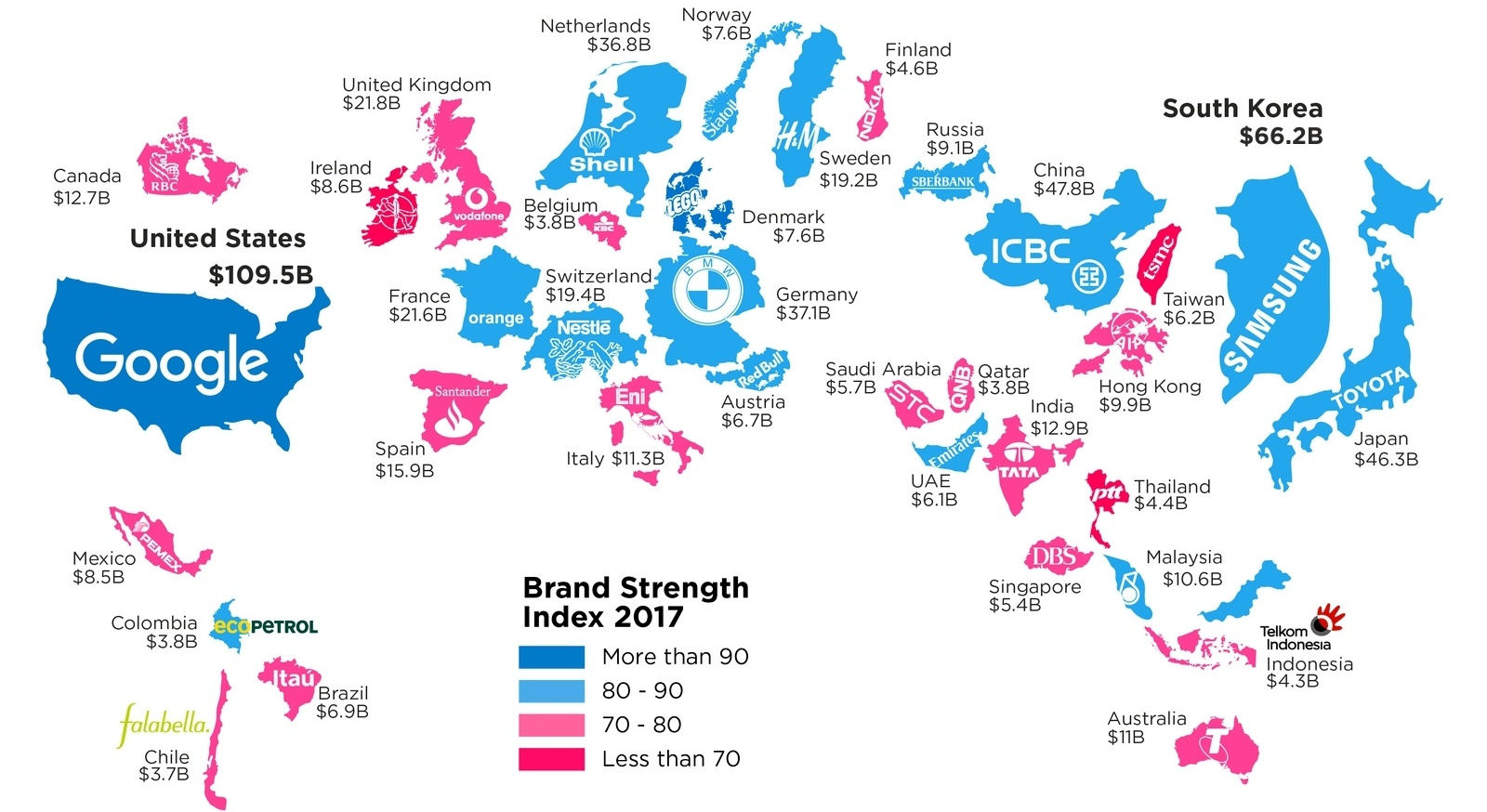In baseball, the game’s strategy was forever changed when Oakland Athletics traded in the standard scout’s intuition for a data-driven approach. It was a switch that eventually led the team to an impressive 20-game winning streak, depicted in the movie Moneyball—it also kickstarted a broader revolution in sports analytics. Similarly, successful data patterns are also being discovered by experts in the investing world. One such framework is factor investing, where securities are chosen based on attributes that are commonly associated with higher risk-adjusted returns.
Factor Investing 101
Today’s infographic comes to us from Stoxx, and it explains how factor investing works, as well as how to apply the strategy in a portfolio.
A Selective Approach
There are two main types of factors. Macroeconomic factors, such as inflation, drive market-wide returns. Style factors, such as a company’s size, drive returns within asset classes. Analysts have numerous theories as to why these factors have historically outperformed over long timeframes:
Rewarded risk Investors can potentially earn a higher return for taking on more risk. Behavioral bias Investors can be prone to acting emotionally rather than rationally. Investor constraints Investors may face constraints such as the inability to use leverage. Astute investors can capitalize on these biases by targeting the individual factors driving returns. The Common Style Factors Based on academic research and historical performance, there are five style factors that are widely accepted.
It is becoming more straightforward for investors to implement these factors in a portfolio.
The Common Style Factors
Based on academic research and historical performance, there are five style factors that are widely accepted.
How Can You Apply Factor Investing?
All investors are exposed to factors whether they are aware of it or not. For example, an investor who puts capital in an ESG fund—targeting companies with good corporate governance—will have some level of quality exposure. However, there are various approaches investors can take to implement factors intentionally.
Single Factors
Factors perform differently over the course of a market cycle. For example, low volatility stocks have historically performed well during market downturns such as the 2008 financial crisis or the 2015 sell-off. Investors can consider macroeconomic information and their own market views, and adjust their exposure to individual factors accordingly.
Multi-factor
Factors tend to exhibit low or negative correlation with each other. For a long-term strategy, investors can combine multiple factors, which increases portfolio diversification and may provide more consistent returns.
Long-short
For each factor, there are investments that lie on either end of the spectrum. Experienced, risk-tolerant investors can employ a long-short strategy to play both sides:
Hold long positions in attractive securities, such as those with upward momentum Hold short positions in unattractive securities, such as those with downward momentum
This diversifies potential return sources, and reduces aggregate market exposure.
Capturing Factors Through Indexing
Active managers have been selecting securities based on factors for decades. To capture factors with precision, managers must carefully consider numerous elements of portfolio construction, such as the starting investment universe and the relative weight of securities. More recently, investors can access factor investing through another method: indexing. An indexing approach provides a framework for capturing these factors, which helps simplify the investment process. Based on objective rules, index solutions provide a higher level of transparency than some active solutions. Not only that, their efficiency makes them more suitable as tools for building targeted outcomes.
The Future of Factors
In light of indexing’s various benefits, it’s perhaps not surprising that exchange-traded factor products have seen immense growth in the last decade. In addition, there’s still plenty of room for factor ETF expansion in equities and other asset classes. Only about 1% of factor ETFs invest in fixed income, and 70% of surveyed institutional investors believe factor investing can be extended to the asset class. As solutions continue to evolve, factor products could become the foundation of many investors’ portfolios. on Last year, stock and bond returns tumbled after the Federal Reserve hiked interest rates at the fastest speed in 40 years. It was the first time in decades that both asset classes posted negative annual investment returns in tandem. Over four decades, this has happened 2.4% of the time across any 12-month rolling period. To look at how various stock and bond asset allocations have performed over history—and their broader correlations—the above graphic charts their best, worst, and average returns, using data from Vanguard.
How Has Asset Allocation Impacted Returns?
Based on data between 1926 and 2019, the table below looks at the spectrum of market returns of different asset allocations:
We can see that a portfolio made entirely of stocks returned 10.3% on average, the highest across all asset allocations. Of course, this came with wider return variance, hitting an annual low of -43% and a high of 54%.
A traditional 60/40 portfolio—which has lost its luster in recent years as low interest rates have led to lower bond returns—saw an average historical return of 8.8%. As interest rates have climbed in recent years, this may widen its appeal once again as bond returns may rise.
Meanwhile, a 100% bond portfolio averaged 5.3% in annual returns over the period. Bonds typically serve as a hedge against portfolio losses thanks to their typically negative historical correlation to stocks.
A Closer Look at Historical Correlations
To understand how 2022 was an outlier in terms of asset correlations we can look at the graphic below:
The last time stocks and bonds moved together in a negative direction was in 1969. At the time, inflation was accelerating and the Fed was hiking interest rates to cool rising costs. In fact, historically, when inflation surges, stocks and bonds have often moved in similar directions. Underscoring this divergence is real interest rate volatility. When real interest rates are a driving force in the market, as we have seen in the last year, it hurts both stock and bond returns. This is because higher interest rates can reduce the future cash flows of these investments. Adding another layer is the level of risk appetite among investors. When the economic outlook is uncertain and interest rate volatility is high, investors are more likely to take risk off their portfolios and demand higher returns for taking on higher risk. This can push down equity and bond prices. On the other hand, if the economic outlook is positive, investors may be willing to take on more risk, in turn potentially boosting equity prices.
Current Investment Returns in Context
Today, financial markets are seeing sharp swings as the ripple effects of higher interest rates are sinking in. For investors, historical data provides insight on long-term asset allocation trends. Over the last century, cycles of high interest rates have come and gone. Both equity and bond investment returns have been resilient for investors who stay the course.

